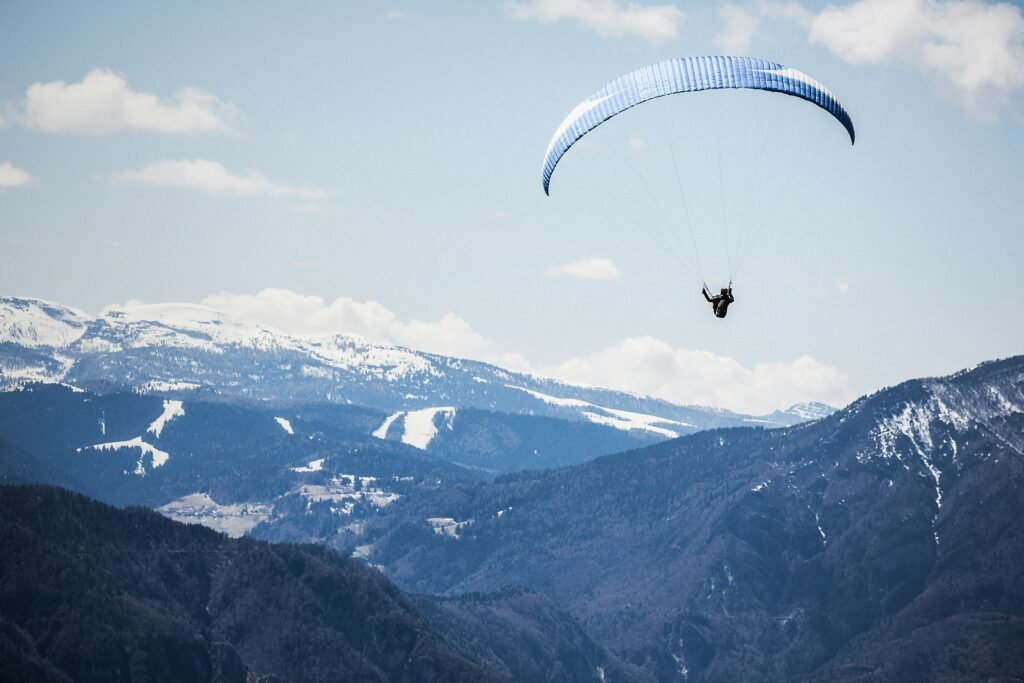Wingsuit flying is one of the most exhilarating extreme sports in the world. The idea of gliding through the air like a bird appeals to thrill-seekers and adventurers alike. But one question often arises: Do you need a parachute when using a wingsuit? The short answer is yes – almost always. Let’s dive deeper into why a parachute is essential and whether there are any exceptions.
Why is a parachute necessary?
Controlled landing
Wingsuits don’t have landing gear or the capability to slow down enough for a safe touchdown. Even with excellent control during the glide, the speed remains too high for a human to land safely without injury.
Limited glide distance
While wingsuits allow horizontal movement, they don’t eliminate the need to descend. At some point, the pilot will run out of altitude, and a parachute is the only way to slow the descent to a safe speed.
Emergency situations
Conditions like strong winds, turbulence, or a miscalculated flight path can disrupt a wingsuit glide. A parachute provides a critical safety net in these scenarios, ensuring the pilot can safely abort the flight if needed.
What happens without a parachute?
Flying a wingsuit without a parachute is extremely dangerous and almost always ends in disaster. There’s no way to slow down enough to land without severe injury or death. Even if someone were to glide close to the ground, the impact at high speeds would be fatal.
Are there any exceptions?
In rare cases, people have attempted wingsuit landings without parachutes. One notable example is Gary Connery, a professional stuntman who successfully landed a wingsuit in 2012. Connery glided into a specially prepared landing zone made of over 18,000 cardboard boxes, which absorbed the impact.
However, these stunts are highly controlled, incredibly risky, and performed by experts under perfect conditions. They are not representative of typical wingsuit flying.
What kind of parachute do wingsuit pilots use?
Wingsuit pilots typically use specialized parachutes designed for their sport. Here’s what makes these parachutes unique:
· Smaller canopies: To reduce drag and improve maneuverability.
· Special packing techniques: To ensure the parachute opens correctly, even in the unique airflow created by wingsuits.
· Reliable deployment systems: Wingsuit-specific parachutes often have extra features to prevent malfunctions during deployment.
How does parachute deployment work?
Parachute deployment in wingsuit flying is similar to skydiving, but there are a few key differences:
1. The pilot first slows down their glide and assumes a stable position.
2. They deploy a small pilot chute, which pulls the main parachute out of its container.
3. Once the parachute is fully inflated, the pilot steers it toward a designated landing area.
Deployment usually happens at an altitude of 1,500–2,000 meters to allow enough time to correct any issues.
Training and safety
Wingsuit flying with a parachute requires significant training. Beginners start with skydiving to build foundational skills, including parachute handling. Most experts recommend completing at least 200 standard skydives before attempting wingsuit flying.
Parachute deployment is one of the most critical skills to master. A small mistake during this step can lead to dangerous outcomes, such as entanglement or late deployment.
Is it worth the risk?
Flying a wingsuit is an incredible experience, but it comes with risks. A parachute is essential for safety, allowing pilots to enjoy the thrill of gliding while ensuring they can return to the ground safely. Without it, wingsuit flying would be far too dangerous for almost anyone to attempt.
So, do you need a parachute with a wingsuit? Yes, without a doubt. While the wingsuit allows you to glide gracefully through the air, it doesn’t eliminate the need for a controlled and safe landing. A parachute is your lifeline in this extreme sport, and proper training is just as important. If you’re considering wingsuit flying, remember that safety always comes first.

